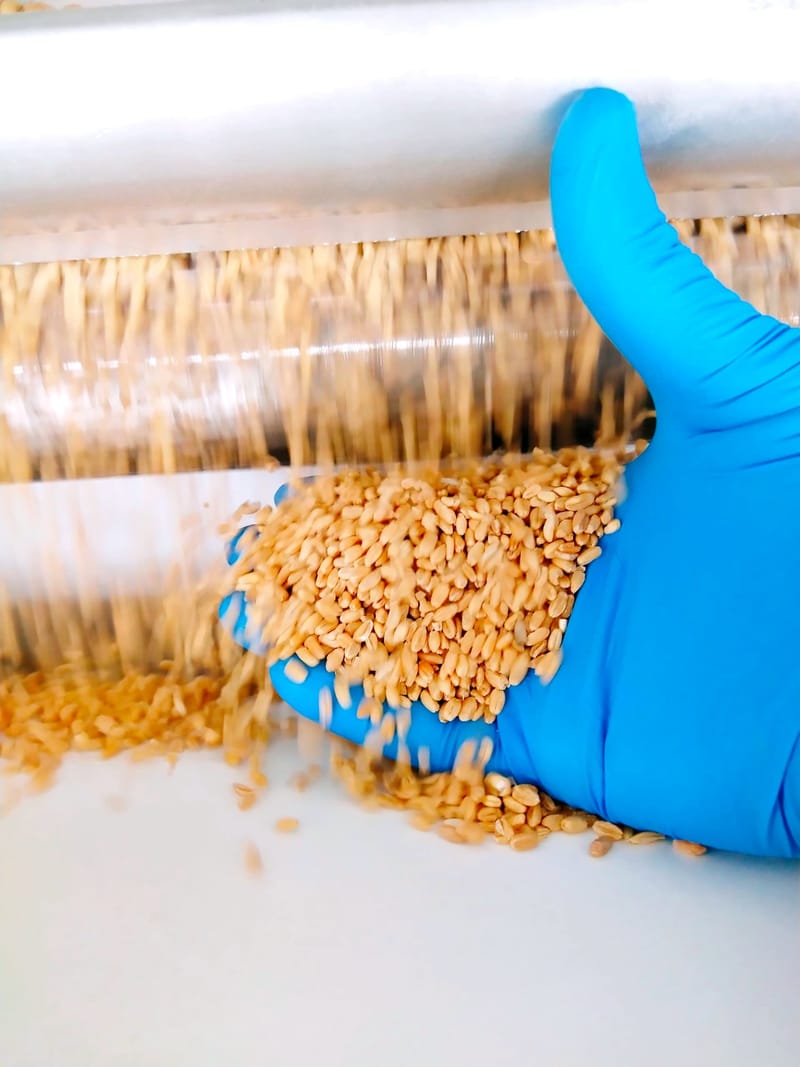Milling and Grinding

1. Wheat Conditioning and Tempering:
Before wheat can be efficiently broken down, it goes through a conditioning and tempering process. This involves adding water to the wheat to achieve the ideal moisture content and temperature. Proper tempering helps make the bran more pliable and easier to separate from the endosperm during the subsequent milling stages.
2. Feeding the wheat:
The tempered wheat is then fed into the first set of roller mills, often referred to as the "break rolls." These rolls are specially designed to crack the wheat kernels open, creating larger pieces with the bran layer partially detached but not completely separated from the endosperm.
3. Reduction in Particle Size:
After the initial breaking stage, the partially separated wheat particles pass through a series of additional break rolls. These rolls are set progressively closer together, resulting in further reduction in particle size and greater separation of the bran from the endosperm.
4. Sifting and Separation:
As the wheat particles become smaller and more refined, they pass through a sifting and separation process. This process helps isolate the bran, germ, and other impurities, which are separated from the endosperm.
5. Sizing and Grading:
The resulting products are then sized and graded based on particle size. Various sieves and sifters are used to classify the different particle fractions, ensuring that the final product meets the desired specifications and quality standards.
6. Collection and Re-Processing:
Any larger bran particles or endosperm fragments that may have escaped separation are collected and returned for re-processing (control sifter), minimizing waste and maximizing flour extraction.
7. Flour Production:
Once the endosperm particles have been separated from the bran, germ, and other impurities, they are sent to the flour milling stages to be ground into fine flour particles.
8. Quality Control and Analysis:
Samples of the flour are regularly taken for quality control and analysis. These tests include assessments of protein content, moisture, ash content, and other parameters to ensure the flour meets specific quality and safety standards.
9. Blending and Enrichment:
The flour will be blended to achieve specific characteristics or to meet customer specifications. Additionally, vitamins and minerals are added to enrich the flour, comply with regulatory requirements, or address nutritional needs.


